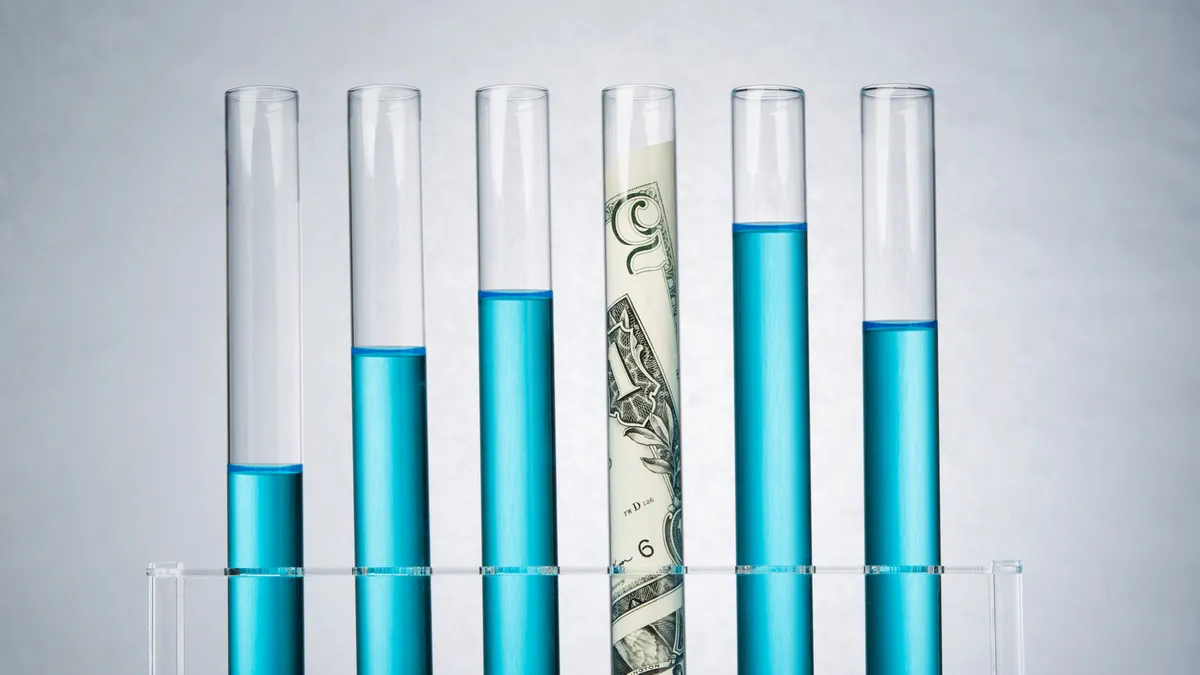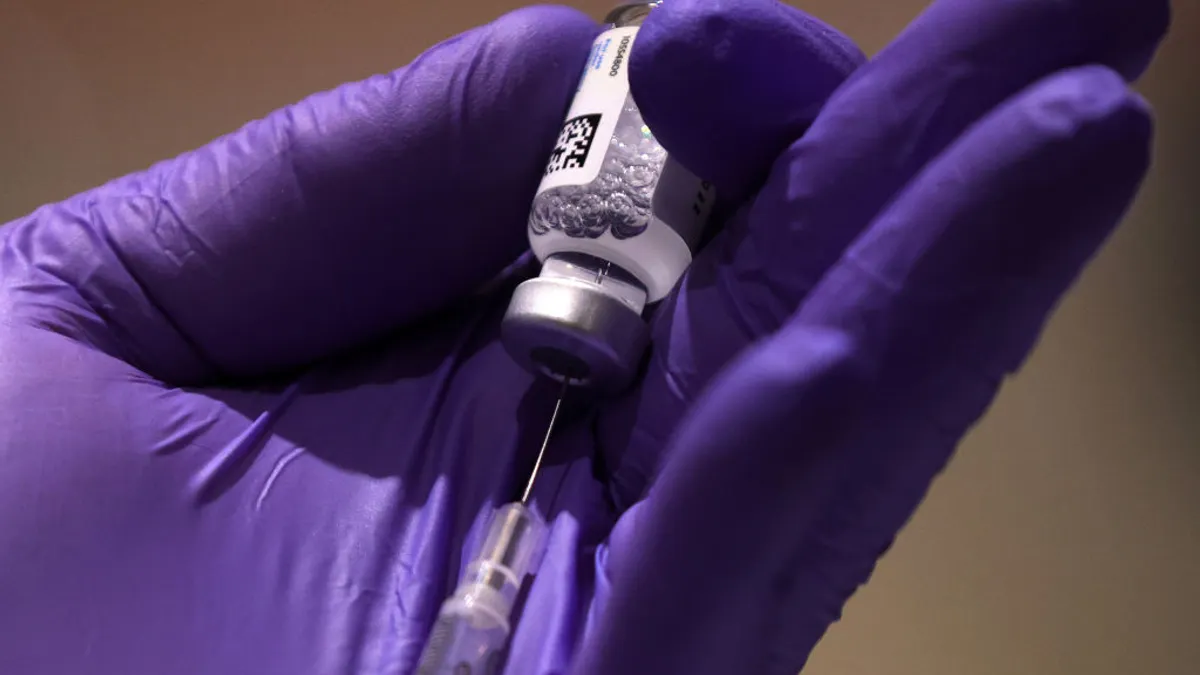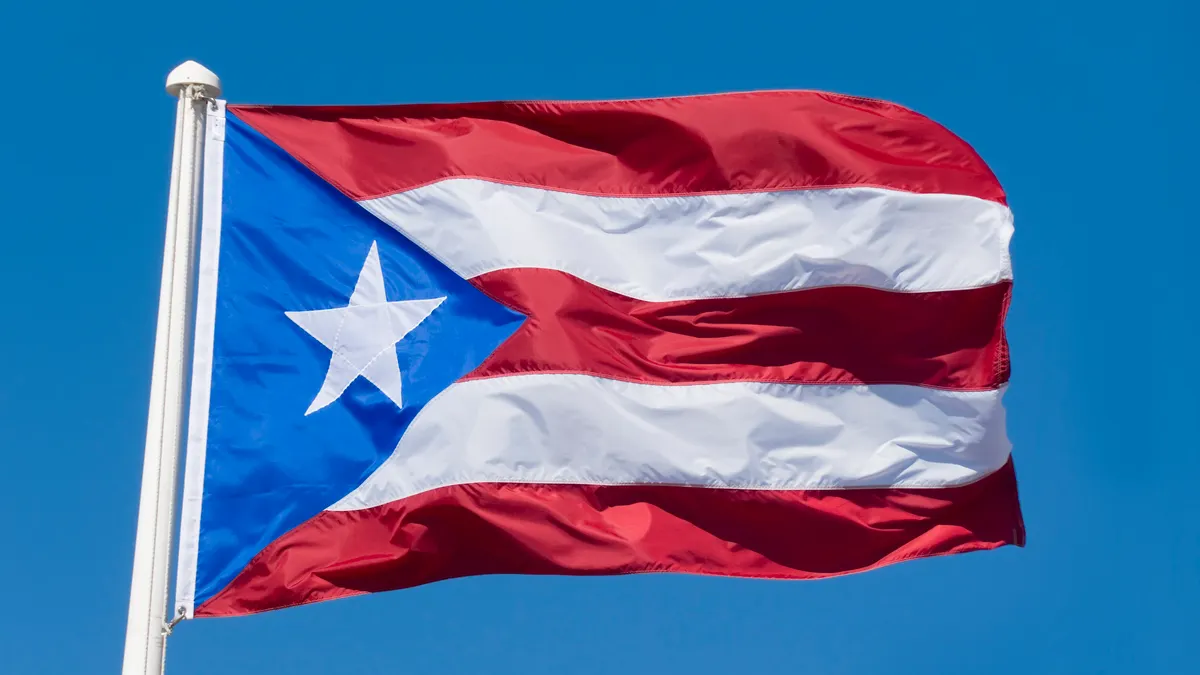History often repeats itself, and the pharmaceutical industry's current "innovation gap" is one they've seen before — the world's largest companies find themselves in the precarious position of needing to make big new bets before their once reliable cash cows stumble.
The innovation gap, also called the innovation deficit, is happening as companies watch some of their bestselling products of the last decade approach the end of patent protection — and with biosimilar competition on the horizon, revenues are bound to erode. R&D pipelines aren't likely to make up the difference in time without some major overhaul, experts say.
Patent expirations are expected to put $226 billion in global prescription sales at risk through 2026, according to a report from Evaluate Pharma. And the replenishment rate of R&D is expected to drop by more than 50% over the next five years, EY analysts said in another report.
Contrary to what the term might imply, the innovation deficit doesn't come from a lack of new scientific advances, says industry analyst Arda Ural, EY's markets leader for health sciences.
"The innovation deficit is not because productivity is low," Ural says, noting there were 50 new molecular entities approved by the FDA last year. "The challenge here is the imbalance between the loss of exclusivity on the top line, and that top line not being replenished by the pipeline for Big Pharma."
To persevere, pharmaceutical giants will need to look for new acquisition targets that give them a leg up as they tiptoe toward the edge of the patent cliff, and small biotechs might offer some much-needed pipeline rejuvenation.
"I think first and foremost, we have to be science-driven and ask: ‘Is there science and good data to support an acquisition?’ And I think, as we’re seeing in the broader biotech market, it’s been challenging.”
Vas Narasimham
Novartis CEO
Inflection points, then and now
The industry is facing a number of substantial patent cliffs, as some of the biggest branded drugs like AbbVie's Humira, Merck & Co.’s Keytruda, Johnson & Johnson's Stelara and more will very likely see biosimilar competition within the decade. Bristol Myers Squibb watched as generics of its mega-blockbuster Revlimid entered the market this year.
Ural calls it an inflection point for the industry, and looking back 10 years, drugmakers underwent some of these same changes.
"Going into the 90s, it was all small molecules addressing more common conditions like hypertension [and drugs like] antidepressants, statins and anti-diabetic medicines, and they were all hitting the cliff around the early 2010s, which created this imbalance between the top line not being supported by the pipeline," Ural says.
Ironically, the biologic monoclonal antibodies coming off patent now were the big innovations that saved the pharmaceutical industry's top line back then. The question now is whether they can pull off that same trick again by leaning into emerging innovations.
"The next inflection point is going to be the cell and gene therapies targeting oncology, rare diseases, neurology,” Ural says. “Gene editing like CRISPR, plus the newly validated mRNA and RNAi platforms are coming to fruition to help mitigate [and help] the industry to get back on that growth path.”
Riding that next wave of innovation to overcome the patent cliff deluge will require some crafty investing, Ural says. Luckily for pharma, the big companies are flush with cash and smaller biotechs are valued well below what they once were, providing opportunities to get in on the ground floor.
The biotechnology index peaked toward the end of 2021 as biotechs reaped the benefits of having innovated in the face of COVID-19, but the index took a sharp downturn into 2022. Ural says the biotech sector became a story of haves and have-nots — more mature companies with marketed products or near-term catalysts in their pipeline were hurt less after the pandemic share prices wore off while smaller companies with earlier-stage candidates tumbled a lot further. Overall, it was a net loss.
"These smaller biotechs need to avoid distress warnings, avoid cash burns beyond their means, and they need to get to the next value creation point," Ural says. "They look to pharmas, who then need to be smart about where they want to take bets, even though those bets aren't as expensive as they used to be a year ago."
Deals to be made
Novartis' CEO, Vas Narasimhan, is looking carefully at the reasonable options on the biotech table and what innovations are out there that could help build the company past upcoming challenges, he said Tuesday during the company's first-quarter earnings call.
"When you look at the pullback in the [biotechnology index] … many companies are trading below even the cash they have on hand," Narasimhan said. "But I think first and foremost, we have to be science-driven and ask: 'Is there science and good data to support an acquisition?’ And I think, as we're seeing in the broader biotech market, it's been challenging."
Of course, for the pharma giants, the more cash you have, the better your options are. J&J's CFO, Joe Wolk, said on the company's own first-quarter earnings call last Tuesday that more than $20 billion in cash flow generation gives them the firepower they would need to bring in new assets. One of J&J's best sellers, Remicade, is already facing competition and ongoing sales dips.
"I've got every confidence that we'll be able to do small-, medium- and large-scale acquisitions should the right opportunity present itself," Wolk said. "Whether it's near-term or long-term, I think we're in a very good position to utilize today's cash and hopefully that which we generate tomorrow."
Ural sees these big pharmas lining up for early innovation markets to get ahead of their respective competitive headwinds.
"Foundational shifts are indicating that the industry needs to set itself up for the next wave of growth," Ural says. "Every pharma needs to take their positions.”
Even some companies that never partake in the M&A rat race have joined the fray. Regeneron, which has always opted for partnerships over acquisitions, last week announced it would buy biotech Checkmate Pharmaceuticals for $250 million.
Checkmate's cancer drug in development could someday help Regeneron fill some big shoes — its foundational drug Eylea's patent cliff is coming up halfway through this decade. The treatment pulled in almost $5.8 billion in 2021.
"This is the business cycle," Ural says. "This is an industry driven by science and medical innovation."
Tapping into the ecosystem
The traditional approaches to driving pharma growth include internal R&D and external M&A. But Ural and other EY analysts like to look at the "ecosystem" a company creates, including alliances such as partnerships and other business arrangements in which biopharma companies share knowledge, market access, technical expertise and other factors that can be mutually beneficial.
These types of agreements can foster growth with less risk considering both cost and time, potentially increasing the return on R&D investment, an EY report says. Getting venture capital into early biotechs can fill big gaps down the road.
"Companies need to tap into the ecosystem," Ural says. "That corporate venture capital playbook needs to be dusted off, because it's another lever that they need to play, and the important piece of the ecosystem right now is the biotechs."





















